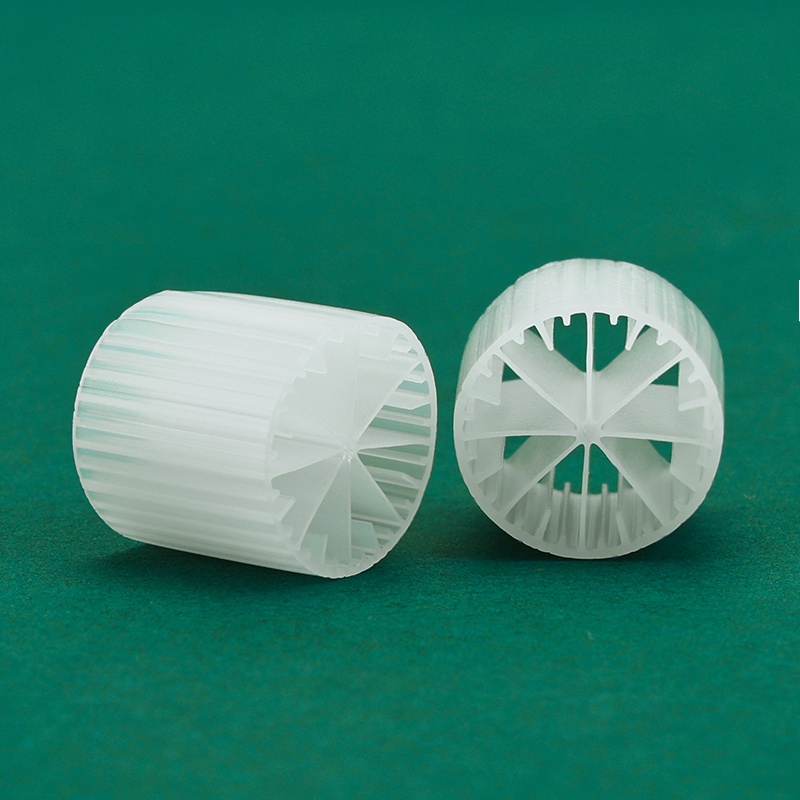 +86-15267462807
+86-15267462807
MBBR (Moving Bed Biofilm Reactor) media is a versatile component in wastewater treatment systems, offering advantages like high treatment capacity, compact footprint, and low maintenance. However, the specific type of MBBR media chosen may vary depending on the application. Here's a breakdown of key considerations for different use cases:
Surface Area: Prioritize high surface area media to accommodate a diverse microbial population for efficient breakdown of a wide range of pollutants.
Material: Choose durable and chemically resistant media, such as polyethylene (PE), that can withstand harsh chemicals commonly used in wastewater treatment.
Specific Applications: Consider the type of wastewater being treated. For instance, oily wastewater may require media with a specific surface texture to promote adhesion of oil-degrading microbes.
Surface Area: While a good surface area is still crucial, focus may differ. For example, nitrifying bacteria are essential for breaking down ammonia in aquaculture, so media that promotes their growth might be preferred.
Material: Biocompatibility becomes a paramount concern. The media should not leach harmful substances into the water that could harm fish or other aquatic life. Some manufacturers offer MBBR media specifically designed for aquaculture with this in mind.
Specific Applications: Consider the type of aquaculture system (e.g., freshwater, saltwater) and the specific species being raised. Some fish may be more sensitive to certain materials or require a specific biofilm community for better health.
Surface Area: Tailor the surface area to the specific pollutants and treatment goals. For instance, high surface area may be needed for complex industrial wastewater, while a lower surface area may suffice for simpler industrial effluents.
Material: Choose media that can withstand the specific chemicals and conditions of the industrial wastewater. This may involve factors like temperature, pH, and the presence of heavy metals or other toxic compounds.
Specific Applications: Carefully evaluate the industrial process and the characteristics of the wastewater stream to select the better appropriate media. Consult with experts in industrial wastewater treatment for guidance.
Surface Area: Consider the type of food and beverage wastewater being treated. For instance, high surface area media may be needed for wastewater with high organic content, while a lower surface area may suffice for less contaminated effluents.
Material: Choose food-grade media that meets strict safety standards and does not impart any off-flavors or odors to the treated water. Stainless steel or certain types of plastics are commonly used in food and beverage applications.
Specific Applications: Adhere to stringent regulatory requirements and industry better practices for wastewater treatment in the food and beverage sector. Consult with experts in food and beverage wastewater treatment for specific recommendations.
Surface Area: Prioritize high surface area media to accommodate a diverse microbial population for efficient breakdown of a wide range of pharmaceutical compounds and their metabolites.
Material: Choose chemically inert and biocompatible media that will not react with or adsorb pharmaceuticals, potentially altering their efficacy or introducing contaminants. Specialty materials like ceramics or certain plastics may be suitable.
Specific Applications: Follow strict regulations and guidelines for pharmaceutical wastewater treatment to ensure the safe disposal of potentially hazardous compounds. Consult with experts in pharmaceutical wastewater treatment for tailored advice.
Table View:
| Application | Surface Area | Material | Specific Considerations |
| Wastewater Treatment | Prioritize high surface area for diverse microbes. | Durable and chemically resistant (e.g., PE). | Consider type of wastewater (e.g., oily). |
| Aquaculture | Consider specific needs (e.g., nitrification). | Biocompatible, no harmful leaching. | Consider type of system and species. |
| Industrial Applications | Tailor to pollutants and treatment goals. | Withstand specific chemicals and conditions. | Evaluate industrial process and wastewater stream. |
| Food and Beverage Industry | Consider type of wastewater and organic content. | Food-grade, meet safety standards. | Adhere to regulations and better practices. |
| Pharmaceutical Applications | Prioritize high surface area for diverse microbes. | Chemically inert and biocompatible. | Follow strict regulations and guidelines. |
